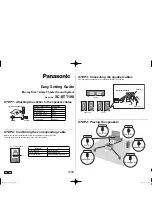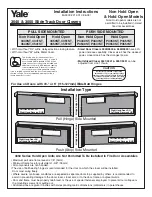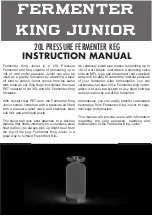
Description of function
22
3.3.7
Setting for Direct Current (DC)
The setting for direct current is performed as described in section 3.1. The Tiger
170 AC/DC and Tiger 210 AC/DC can weld with either direct current (DC) or
alternating current (AC). The Tiger 170 DC und Tiger 210 DC can only be use for
direct current (DC).
When welding with DC the polarity of the output sockets always remains the
same. The marking on the outlet sockets indicate which outlet is positive polarity
and which is the negative polarity. When TIG welding the torch is always
connected to the negative pole. The reason for this is that the positive pole has
an extremely high thermal loading during welding. The negative pole also has the
torch symbol assigned to it.
When stick-electrode welding the polarity is dependant upon the type of
electrode being used, and therefore which socket should be connected to the
electrode holder. For this information the manufacturers data sheet should be
referred to ensure correct usage.
3.3.8
Setting for Alternating Current (AC)
The setting for alternating current is performed as described in section 3.1. The
Tiger 170 AC/DC and Tiger 210 AC/DC has the possibility of operating in the
Direct Current (DC) or the Alternating Current (AC) welding output modes
With AC welding mode the electrode polarity continually changes from positive to
negative. The electrical loading on the electrode alters from negative to positive
according to the balance and frequency setting on the machine for each positive
or negative cycle. During TIG welding the torch is connected to the negative pole
of the power source. The use of AC enables the welding of Aluminium and
Aluminium alloys.
When stick-electrode welding the machine parameters for frequency and balance
are automatically set to 50Hz and 50% respectively. This mean that it is then
irrelevant which socket is connected to the stick-electrode holder and which is
connected to the workpiece cable. AC stick-electrode welding offers the
advantage that arc blow because of strong magnetic fields can be minimised.
3.3.9
Wave balance
The setting of the wave balance is performed as described in section 3.1. The
wave balance setting option is possible with alternating current (AC) welding. It
can be varied from -80 % to +80 % and makes it possible to influence the arc
from, the penetration, and cleaning effect when welding Aluminium within a very
wide range. In the middle position (50 %), the negative and positive welding
current is distributed equally for each current cycle. In the event of increasing
negative balance, the proportion of negative welding current is increased (up to
- 80 %) and the positive proportion is reduced. This makes the arc slimmer and
produces a deeper penetration combined with a reduced electrode load. In the
event of increasing positive balance, the proportion of positive welding current is
increased (up to + 80 %) and the negative proportion is reduced. The positive
proportion improves cleaning of the weld pool. The arc becomes wider and the
penetration is reduced.
3.3.10 AC-Frequency
The setting of the frequency is performed as described in section 3.1. The setting
for the frequency can only be done in conjunction with the AC TIG welding. The
value for the frequency determines how fast the polarity changes from negative
to positive on the welding outlet sockets of the power source. The setting range
for this parameter is between 50Hz to 200Hz for example with a frequency
setting of 200Hz the polarity changes from plus to minus every 5ms (=0.005
Содержание 150 3310
Страница 1: ...GB OPERATING INSTRUCTIONS TIG welding units TIGER 170 210 DC AC DC SET...
Страница 7: ...Introduction 7 1 2 General description Fig 1 1 TIGER 170 DC and Tiger 210 AC DC...
Страница 57: ...Spare parts 57 10 2 Machine components photographs 2...
Страница 58: ...Spare parts 58...
Страница 63: ......
















































